Abstract
An evaluation has been undertaken of the efficiency of laminar-flow ventilation in operating-rooms in which conventional operating-room clothing was used. It has been demonstrated that velocities in the region of 0·3-0·4 m./sec. will give maximum returns for effort in both down-flow and cross-flow systems. At this velocity the laminar-flow system, in terms of airborne bacteria measured at the wound site, was about 11 times more efficient using horizontal air-flow and 35-90 times more efficient using vertical air-flow than a plenum-ventilated operating-room.
Full text
PDF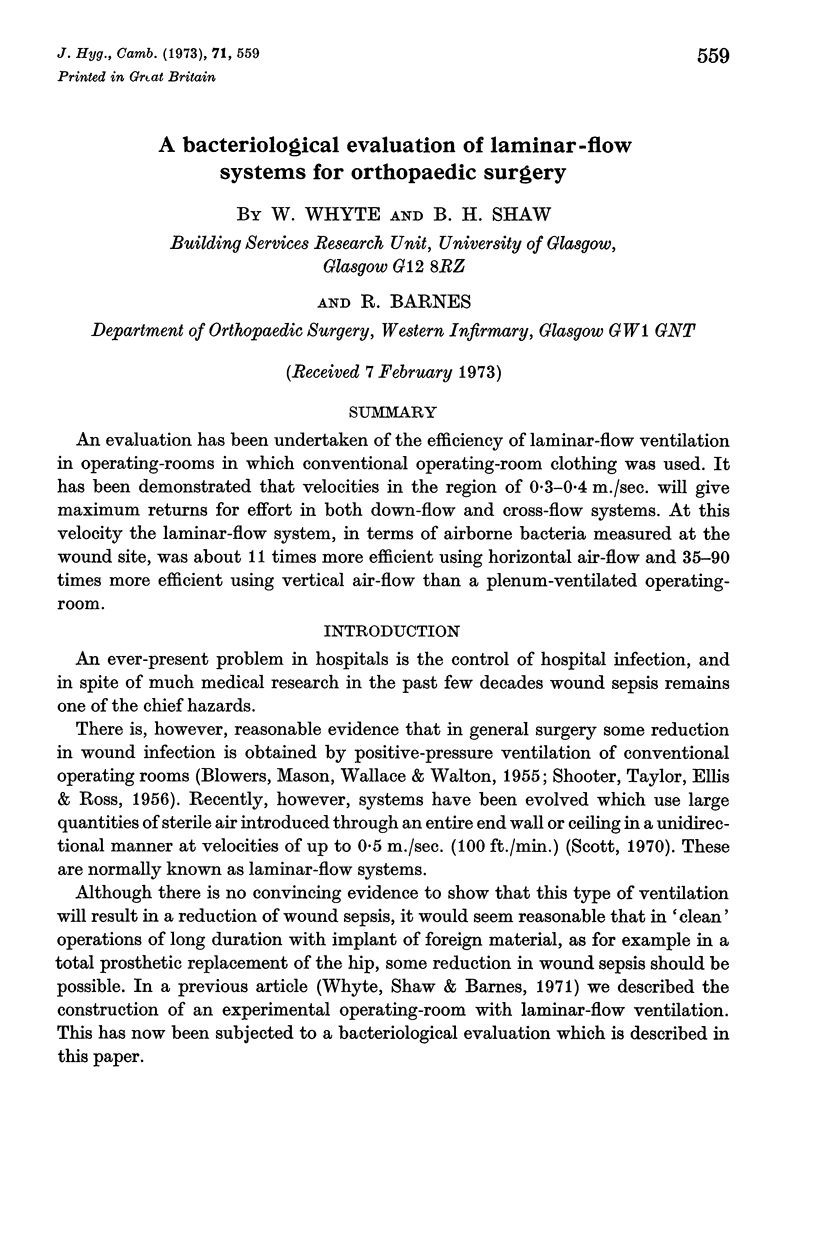
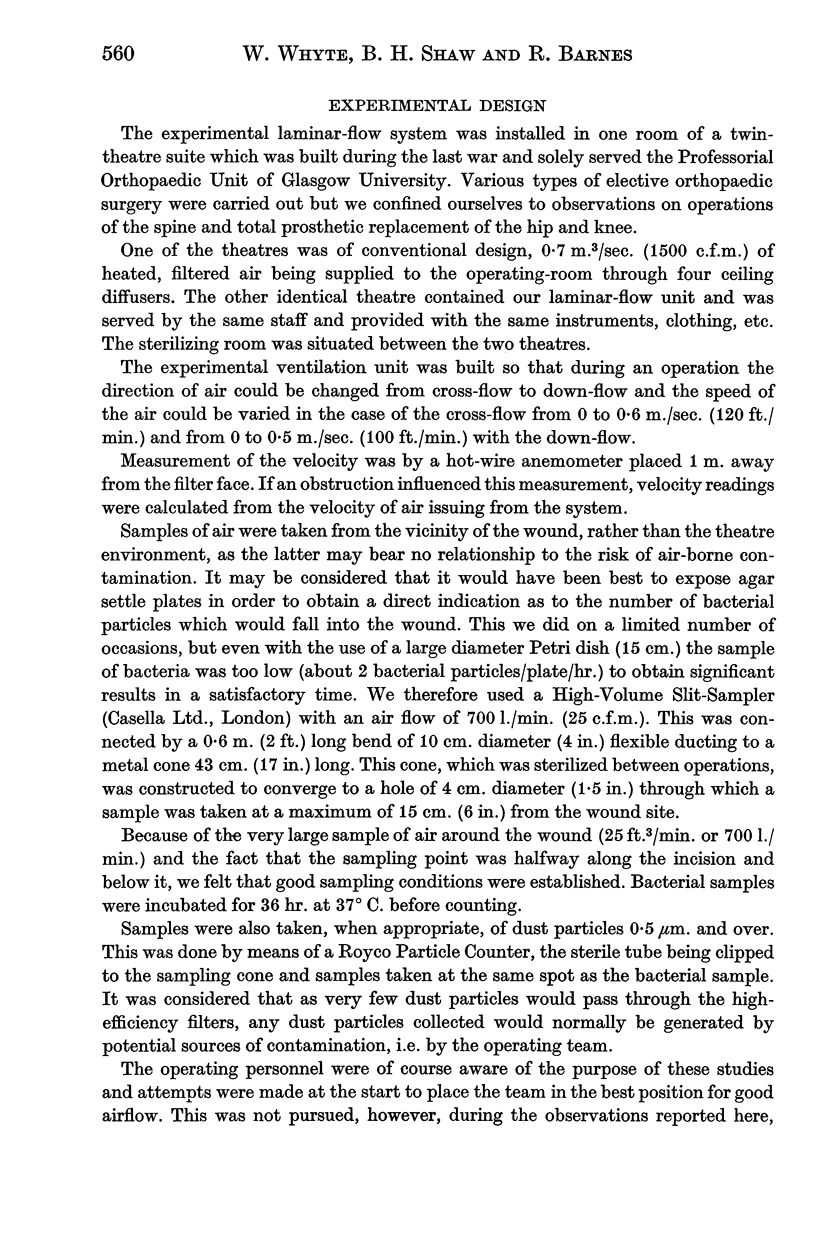
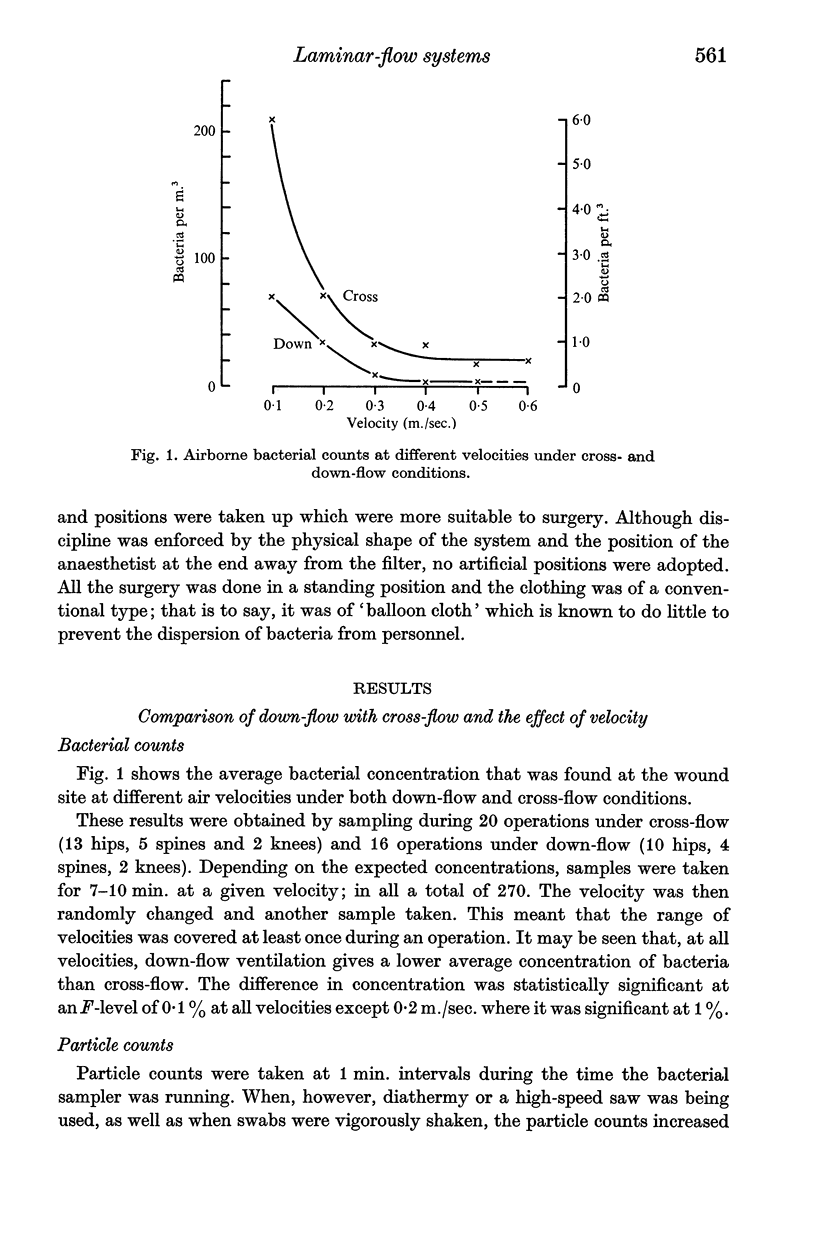
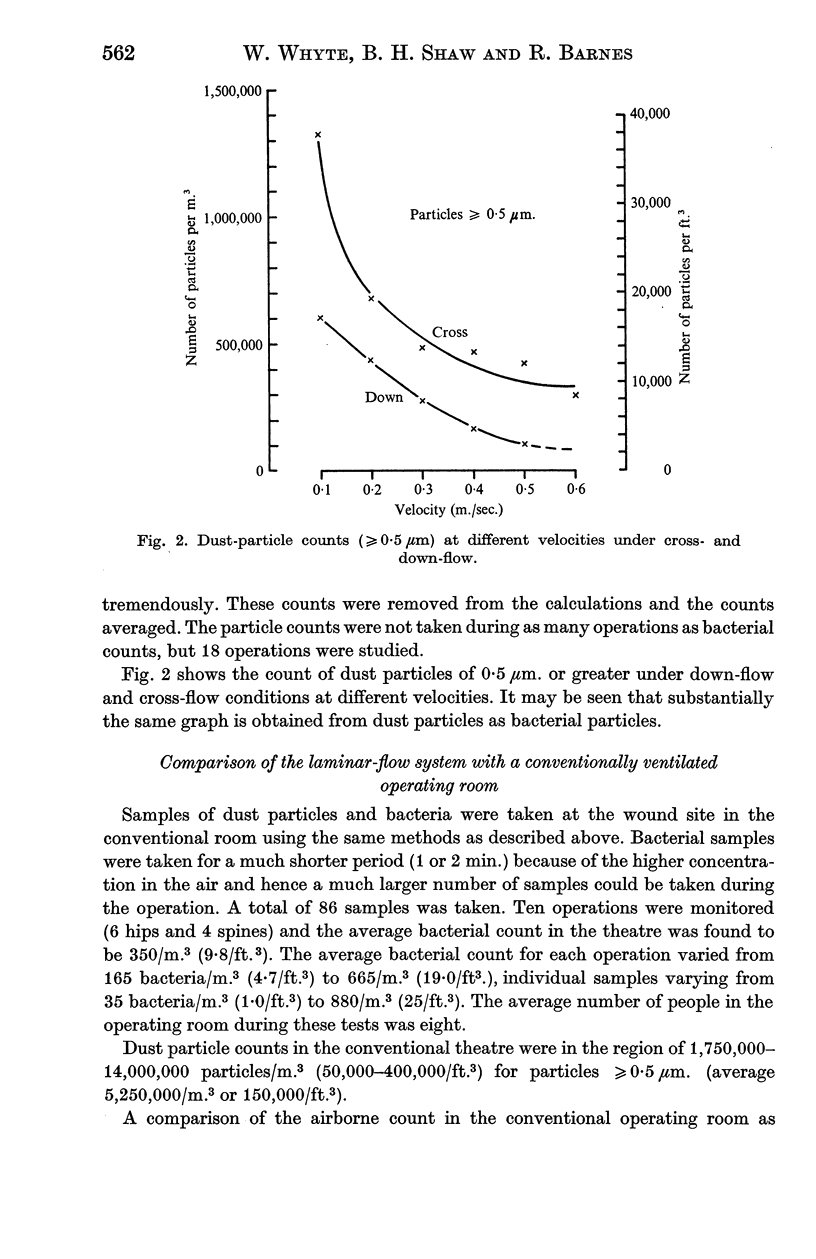
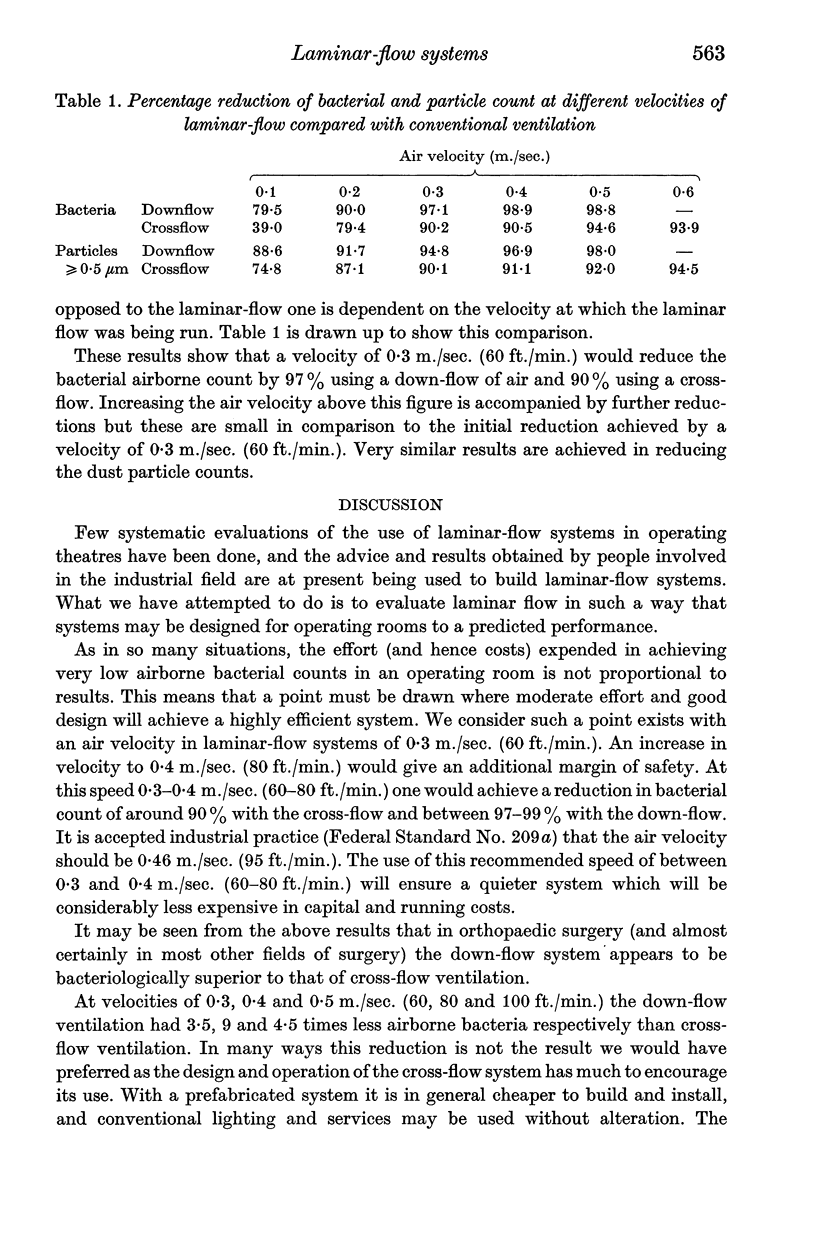

Selected References
These references are in PubMed. This may not be the complete list of references from this article.
- BLOWERS R., MASON G. A., WALLACE K. R., WALTON M. Control of wound infection in a thoracic surgery unit. Lancet. 1955 Oct 15;269(6894):786–794. doi: 10.1016/s0140-6736(55)92385-0. [DOI] [PubMed] [Google Scholar]
- ELLIS G., ROSS J. P., SHOOTER R. A., TAYLOR G. W. Postoperative wound infection. Surg Gynecol Obstet. 1956 Sep;103(3):257–262. [PubMed] [Google Scholar]
- Scott C. C. Laminar-linear flow system of ventilation. Its application to medicine and surgery. Lancet. 1970 May 9;1(7654):989–993. doi: 10.1016/s0140-6736(70)91110-4. [DOI] [PubMed] [Google Scholar]
- Whyte W., Shaw B. H., Barnes R. An experimental laminar-flow operating-room. Lancet. 1971 Oct 23;2(7730):905–906. doi: 10.1016/s0140-6736(71)92506-2. [DOI] [PubMed] [Google Scholar]


